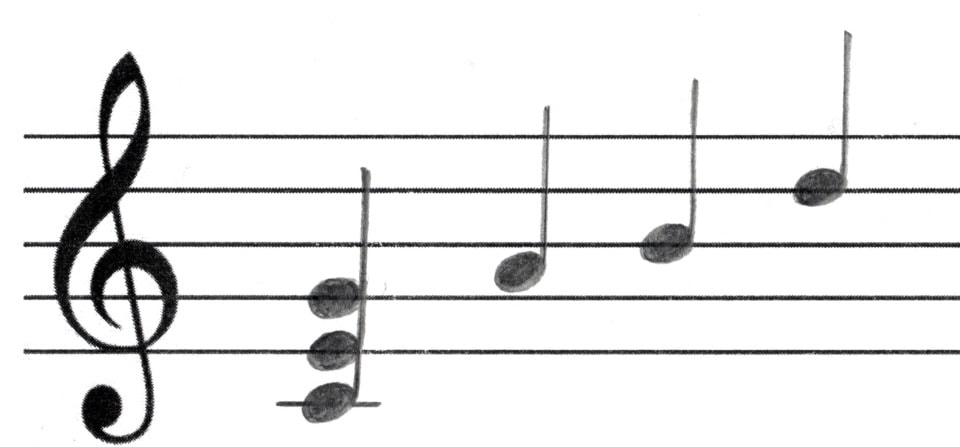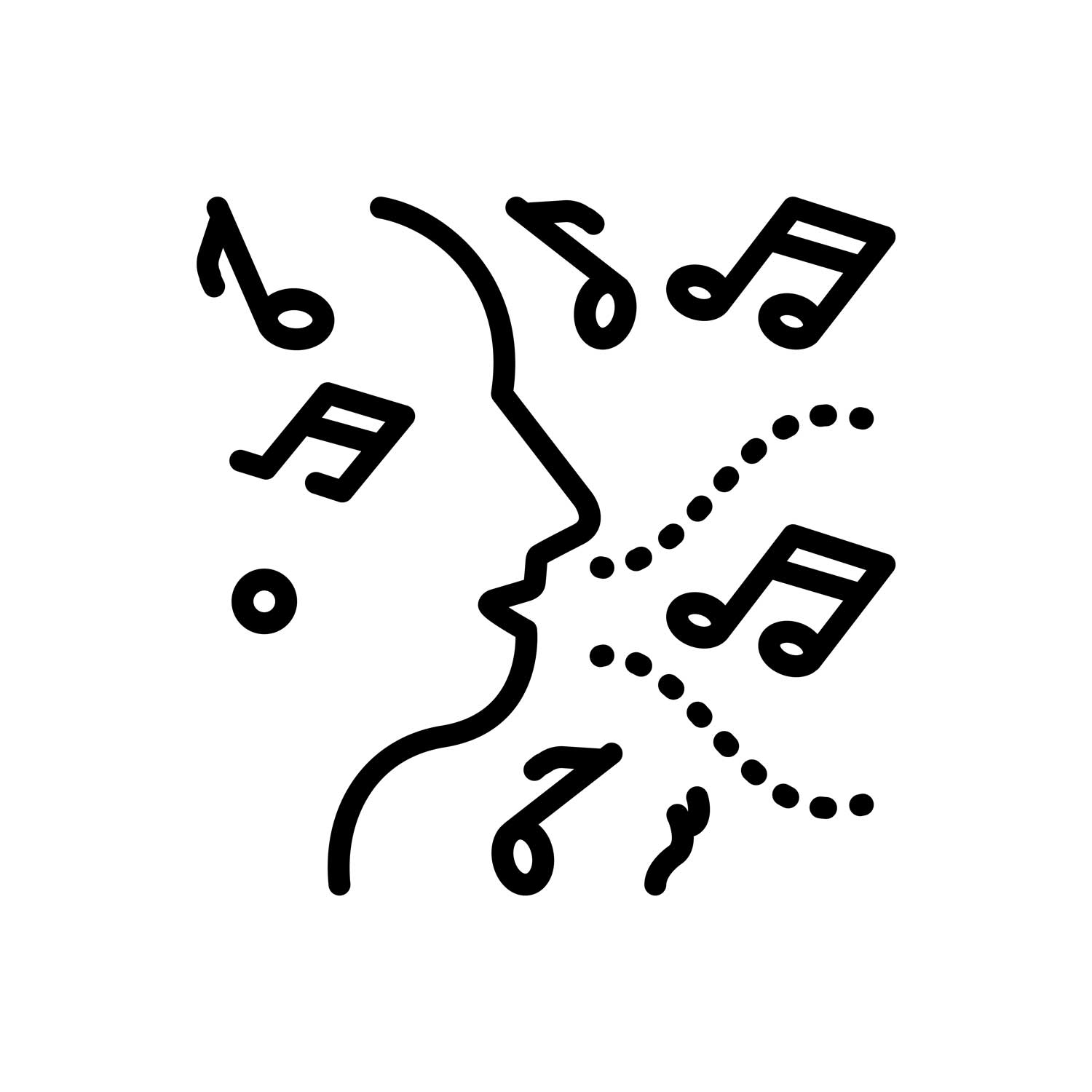Seeing the big stars of rock and pop live never gets boring. They don't sing a song the same way every time, but always a little differently. They change their melody or rhythm depending on what they feel when singing or what they perceive in their audience. Maybe it's just a little melodic twist, maybe they sing a passionate word high up or unexpectedly change the groove of their singing.
This is "improvisation": the spontaneous change of melody or rhythm when singing. It is important for every singer who does not sing classical compositions to be able to do this. The ability to improvise means vocal freedom, and it brings a personal touch to the singing. Without it, even the most soulful singing remains a mere re-singing, even if it is an original song: always the same and ultimately boring for the audience.
However, many aspiring singers don't dare to deviate from the prescribed vocal melody of their favourite song. They don't know what they should sing instead. And then there's the fear of singing the "wrong" notes. In case you feel the same way, we would like to give you a simple rule right at the beginning: What sounds right to you is right! So "feel free": try it out, first of all at home in your own safe environment.
Below we give you tips on how you can change melodies, which additional notes always fit and how scales can help you improvise. There are also a few aids for rhythm and groove at the end.
Changing the melody: finding the right notes
Take a vocal line from one of your favourite songs, perhaps the beginning of a new verse, and sing the first note higher or lower (depending on what feels good for your vocal range). Then go back to the original melody over a few passing notes. Tip: Play the chord progression of the vocal phrase on your instrument or on a playback, over and over again. And find notes that sound "right" to you in this overall context.
Every chord in a pop song can be accompanied by additional notes. The great thing is: you can sing any of these "optional notes" over the chord, it always sounds good. Find the chord in the part of your song that interests you and play the chord on an instrument. For example, you can sing six different notes to a C major chord:

Melodic building blocks and scales
You don't need to reinvent each of your improvisations note for note. Many aspiring singers are inspired by recurring melodic variations that they hear from their favourite stars. These are typical tone embellishments or Vocal Runswhich are often suitable as building blocks for your own improvisations.
There are also prefabricated melodic "steps" that you can ascend and descend, tone steps that always fit. The big stars also use them for their improvisation: "scales". You've probably heard guitarists who can play solos that fit every chord without even thinking about it. The trick is: they simply play the notes up and down the scale that match the chord.
Use these scales as a source of ideas for your own improvisation. To find a suitable scale, you only need to know what the basic chord of your song is. If your song is in a major key, the so-called "pentatonic" scale (five pitches) is almost always suitable. For a song in C major (C-E-G), these are the following notes, sung upwards and downwards:

If the basic chord of your song is in a minor key, for example A minor (A-C-E), then the same scale fits, just starting on a different note: A."

Can your improv go a bit soulful? Then use the blues scale. Typical for it are the "blue notes", you can recognise them by the b-flat accidentals (below again starting on C). As the blues scale is usually sung with an undiminished fifth on the upbeat (with G), but with a diminished fifth on the downbeat (with G flat), it is best to sing it like this:

At first glance, this may seem like dry music theory, but that is deceptive. The scales can be heard wherever singers improvise. Just listen to Aretha Franklin, the Queen of Soul, and see what she can express with just one scale: From the beginning, in her free improvisation, to the end of her song, she sings in the blues scale.
As you can see, the scales definitely belong in your melodic improvisation toolbox. Our tip: use them sparingly. They shouldn't tempt you to cram your songs full of soulful melodic phrases from beginning to end - although that can be a good exercise. Practise the scales on different chords, and with different vowels (I-E-A-O-U). Then incorporate parts of them where you want to give your melody more feeling or elegance, for example as ascents or descents.
Rhythms: Clapping and the voice as a percussion instrument
Improvisation also involves being able to work creatively with rhythms. Rhythmic delays, such as syncopation, accented notes or new accents can give the vocals a different groove. Soul icon James Brown, for example, has developed a vocal style that emphasises hard rhythmic accents rather than melody, in ever new variations. The great thing about it: if the rhythms are good and groove, the music gets into your legs. We also see this in R&B and rap.
The first thing you need for this is rhythmic security and to always know where you are in time. A classic exercise is to stomp your feet on beats 1 and 3 and clap on beats 2 and 4 while singing. Soul greats such as Aretha Franklin and James Brown learnt this from an early age in their gospel choirs. Here's another tip: if you're not sure whether you're on point rhythmically, speak the rhythm of your vocal phrase first before you sing.
It is also a great help to use a shaker or a tambourine when singing. Whether it's hand-clapping, a shaker or a tambourine, it helps you to develop a sure sense of rhythm and involve your whole body. This will get your vocals grooving - and your audience tapping their feet or even dancing along.
As soon as you are rhythmically confident, you can also incorporate your own rhythmic figures into your singing. This is the beginning of rhythmic improvisation. One trick is to use your voice like a percussion instrument, as jazz singer Al Jarreau does here:
This type of improvisation, using your voice like an instrument, is called "scat singing". It's an art form all of its own, and unless you're into jazz, you don't need to scat, of course. In fact, you don't need to make many notes or sing complicated rhythms. Start with simple melodic-rhythmic building blocks that you like and incorporate them into your singing here and there.
Make audio recordings of your improvisations so that you can correct yourself - and so that good ideas don't get lost. It's also best to get feedback from a good singing teacher. They will also help you to find your own personal touch when improvising.
You can find exercises for building and expanding your voice in the chest and head registers in my online courses. Take a look at the courses I offer: https://singasong-behappy.de/online-gesangsunterricht/






